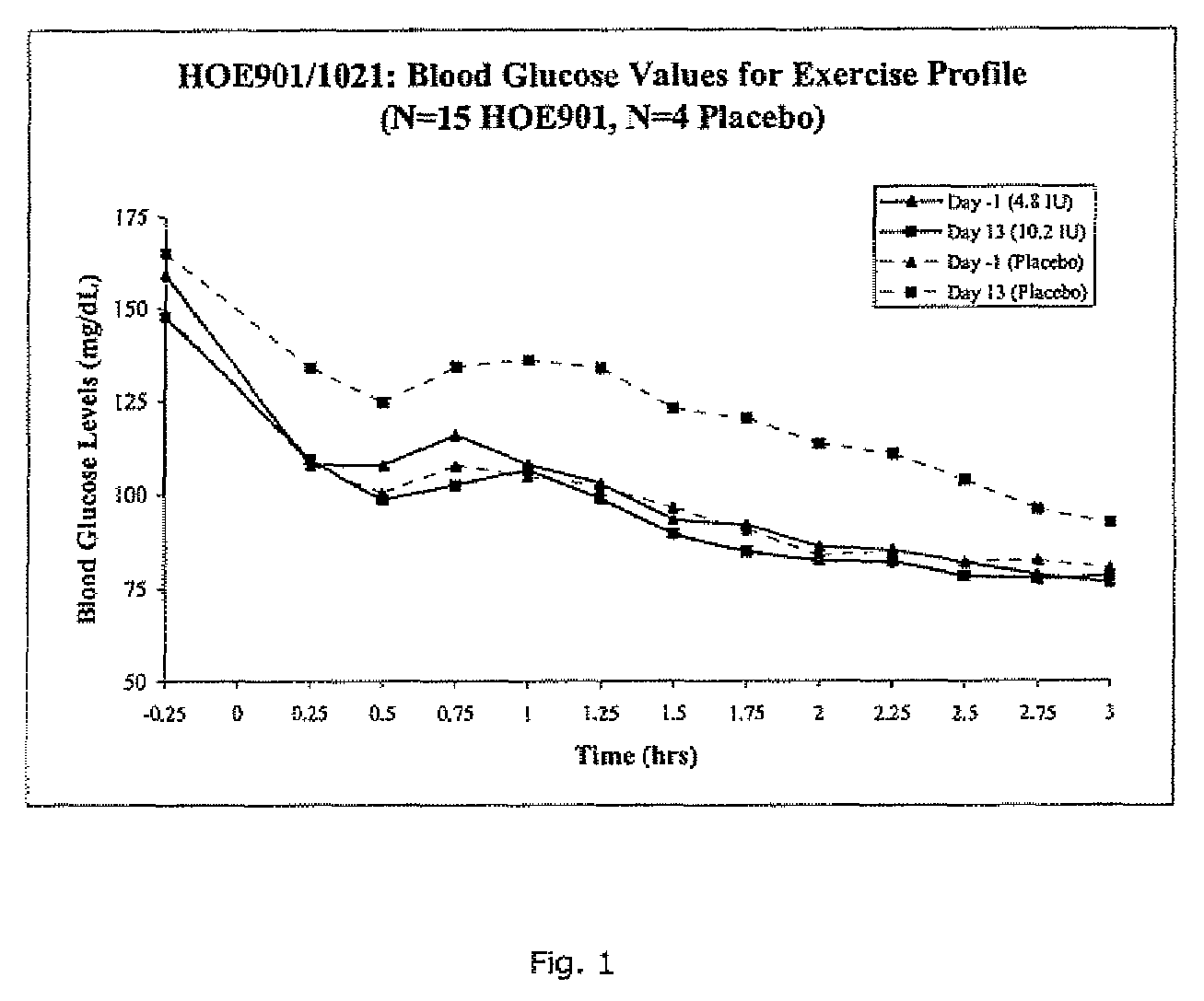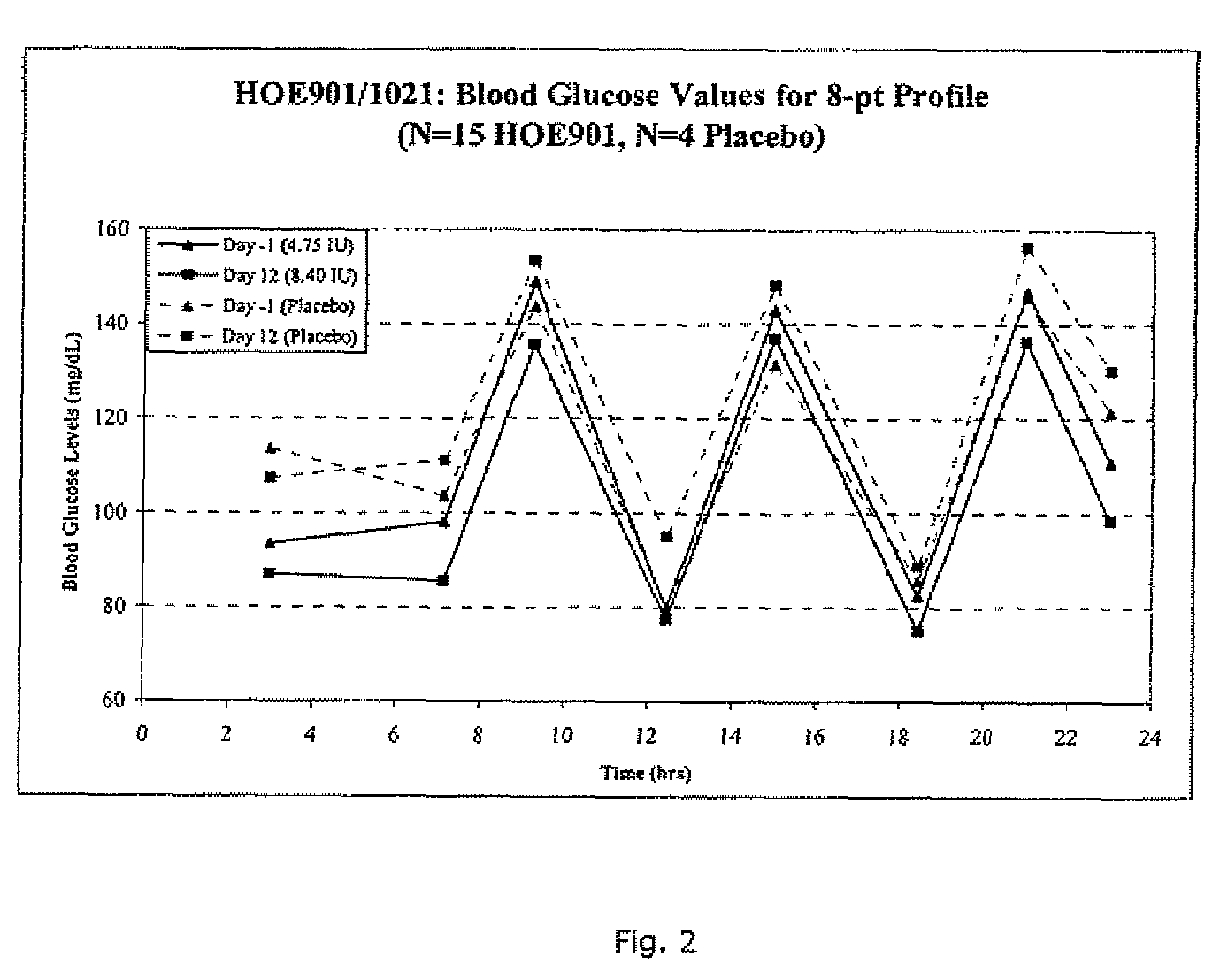Method for reducing cardiovascular morbidity and mortality in prediabetic patients and patients with type 2 diabetes
a type 2 diabetes and patient population technology, applied in the direction of angiogenin, metabolism disorder, extracellular fluid disorder, etc., can solve the problems of large unmet medical need, large public health issue, and large risk of diabetes, and achieve low risk of hypoglycemia, reduce the risk of diabetes, and establish the effect of blood glucose control
- Summary
- Abstract
- Description
- Claims
- Application Information
AI Technical Summary
Benefits of technology
Problems solved by technology
Method used
Image
Examples
Embodiment Construction
[0063]Study HOE901-1021 was conducted to test the safety, efficacy, and tolerability of Lantus® LANTUS (also known as HOE901 and insulin glargine) in treating individuals with IGT, IFG, and mild diabetes. As stated earlier, this patient population is at high risk for CV disease.
[0064]Study HOE901 / 1021 was a randomized, single-blind (pharmacist-unblinded), inpatient, dose-titration study designed to examine the safety and efficacy of HOE901 given once a day subcutaneously at bedtime in a novel population: people with impaired glucose tolerance (IGT) or impaired fasting glucose (IFG). It was conceived as a pilot study for a large international trial of HOE901 in a dysglycemic population of IGT, IFG, and early type 2 diabetes in order to investigate dosing in the prediabetic (IFG / IGT) population for the first time. Of special interest was the incidence of hypoglycemia during the study.
[0065]The study was conducted at three centers in the US. After screening tests, including fasting pla...
PUM
| Property | Measurement | Unit |
|---|---|---|
| concentrations | aaaaa | aaaaa |
| body weight | aaaaa | aaaaa |
| body weight | aaaaa | aaaaa |
Abstract
Description
Claims
Application Information
 Login to View More
Login to View More - R&D
- Intellectual Property
- Life Sciences
- Materials
- Tech Scout
- Unparalleled Data Quality
- Higher Quality Content
- 60% Fewer Hallucinations
Browse by: Latest US Patents, China's latest patents, Technical Efficacy Thesaurus, Application Domain, Technology Topic, Popular Technical Reports.
© 2025 PatSnap. All rights reserved.Legal|Privacy policy|Modern Slavery Act Transparency Statement|Sitemap|About US| Contact US: help@patsnap.com


